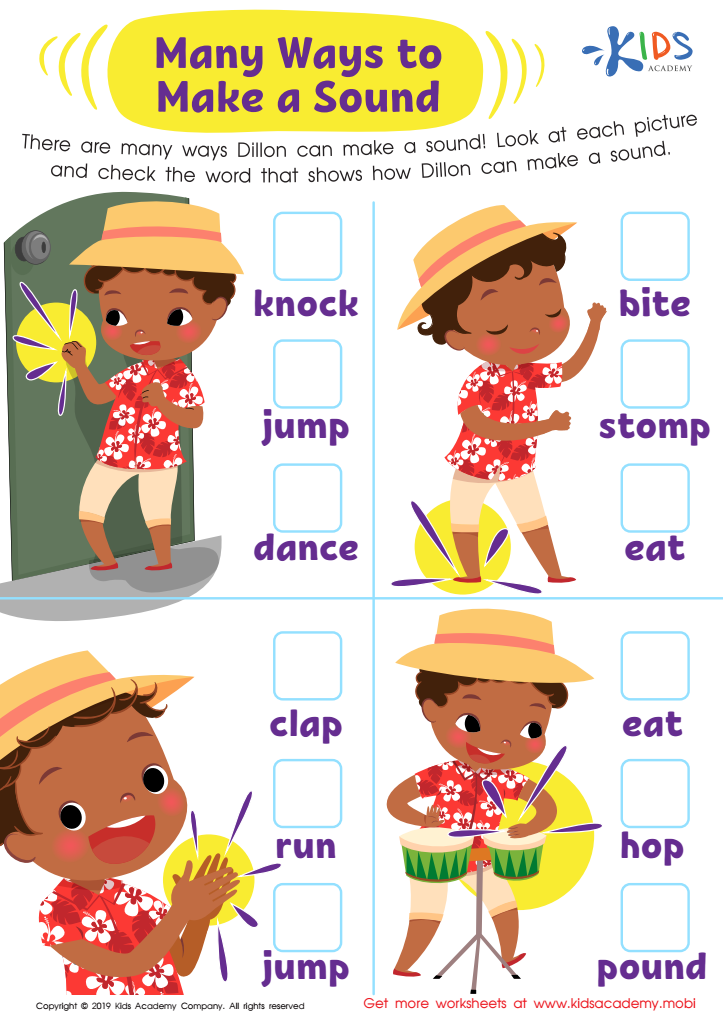Sound identification Elementary Phonics Worksheets for 4-Year-Olds
4 filtered results
-
From - To
Kickstart your child's reading journey with our engaging "Sound Identification Elementary Phonics Worksheets" designed specifically for 4-year-olds. These fun, colorful activities help young learners recognize and differentiate between sounds, building a strong phonetic foundation. Tailored for early learners, each worksheet focuses on auditory discrimination and letter-sound correspondence. Perfect for preschool and pre-K learning, the worksheets incorporate pictures and simple exercises to make learning fun and effective. Help your child develop essential early reading skills and boost their confidence with our expertly crafted phonics resources. Start the adventure in sound today!


Phonological Awareness: Assessment 2 ELA Worksheet


Many Ways to Make a Sound Worksheet


Phonological Awareness: Assessment 2 Worksheet


Phonological Awareness: Assessment 3 Worksheet
Sound identification and elementary phonics are foundational pillars in early childhood education that significantly impact a child's reading, writing, and overall communication skills. Parents and teachers should prioritize these skills for 4-year-olds as they lay the groundwork for successful literacy development. At this age, children's brains are particularly receptive to language acquisition, making it the perfect time to introduce phonics.
Sound identification helps children recognize and differentiate between various sounds in speech, which is essential for understanding phonemes—the smallest units of sound that make up words. By mastering this skill, children gain the ability to decode words when they start reading, leading to improved comprehension and fluency. Elementary phonics instruction builds on this by teaching the relationships between sounds and letters, enabling children to blend sounds to form words and break words into their constituent sounds for spelling.
Moreover, early phonics instruction boosts children’s confidence and motivation to learn. As they experience success in recognizing sounds and reading simple words, they develop a positive attitude toward learning. This headstart in literacy not only benefits academic performance but also enhances communication, critical thinking, and problem-solving skills, providing children with a strong foundation for future educational success. Hence, solidifying these skills at a young age is an investment in a child’s overall cognitive and educational development.

 Assign to My Students
Assign to My Students















